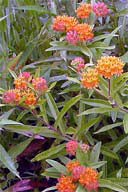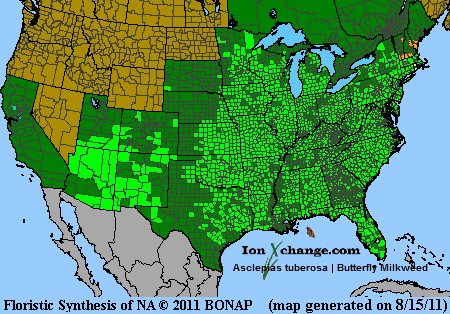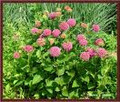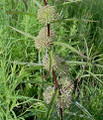 Loading... Please wait...
Loading... Please wait...- Home
- SEEDS
- SEED MIXES
- BUY PLANTS
- Info Request
-
Educational Videos
- Greenhouse Transplanting Demonstration
- Native Seed Cleaning demonstration at Ion Exchange Native Seed and Plant Nursery
- Attracting Butterflies
- Bidens - Bidens cernua Harvest Video
- Big Blue Stem Harvest
- Butterfly Milkweed Video
- Button Blazingstar - Liatris aspera Video
- Buttonbush - Cephalanthus occidentalis Video
- Canada Anemone - Anemone canadensis Harvest Video
- Cardinal Flower - Lobelia cardinalis Video
- Control Burn - Wildflower Field
- Cream Gentian - Gentiana flavida
- Culver's Root - Veronicastrum virginicum Video
- Cup Plant - Silphium perfoliatum Video
- Dormant Seeding | Planting
- Earthyman's Favorite Wildflowers Video
- Eco-Friendly Golf Course Seed Mix
- Floating Islands
- Fringed Loosestrife - Lysimachia ciliata Video
- Giant Yellow Hyssop - Agastache nepetoides Video
- Indiangrass - Sorghastrum nutans Video
- Iowa Prairie Partner Program
- Leadplant - Amorpha canescens (Potted) Video
- Meadow Blazingstar - Liatris ligulistylis
- Midland Shooting Stars - Dodecatheon meadii Video
- Native Plant Nursery Field Irrigation Experiment
- Nodding Onion - Allium cernuum Video
- Ohio spiderwort - Tradescantia ohiensis Video
- Old Man's Beard - Clematis virginiana blooms Video
- Oxeye Sunflower - Heliopsis helianthoides Video
- Prairie Spiderwort - Tradescantia bracteata
- Purple Coneflower - Echinacea purpurea Video
- Rain Garden or Water Garden Video
- Rattlesnake Master - Eryngium yuccifolium Video
- Riverbank Stabilization - Wetland Plants
- Rose Mallow - Hibiscus militaris Video
- Rosinweed - Silphium integrifolium Video
- Royal Catchfly - Silene regia
- Showy Tick Trefoil - Desmodium canadense Video
- Sneezeweed - Helenium autumnale Video
- Swamp Betony - Pedicularis lanceolata Video
- Swamp Milkweed - Asclepias incarnata Video
- Sweet Blackeyed Susan - Rudbeckia subtomentosa Video
- Tall Coreopsis - Coreopsis tripteris Video
- Urban Butterfly Garden
- Wild Bergamot - Monarda fistulosa Video
- Wild Geranium - Geranium maculatum Harvest
- Wild Goldenglow - Rudbeckia lanciniata Video
- Wild Petunia - Ruellia humilis Harvest Video
- Woodland Knotweed - Polygonum virginianum Video
- Yellow Coneflower - Ratibida pinnata Video
- Blog
- Resources
- Policies
Contact Us
Phone:
563-419-0837
or 563-535-7231
Email:
hbright@ionXchange.com
Browse Products
Add to Wish List
You Recently Viewed...
Our Newsletter
ASCLEPIAS TUBEROSA | Butterfly Milkweed
Product Description
Butterfly Milkweed (Ascleipias tuberosa) is found throughout the Tallgrass Prairie region in open areas, usually in prairies or remnants of prairies. It is showing up now along old country roads and abandoned roads and abandoned railroad right-of-ways. It blooms from May through September and can reach 2 1/2 feet in height; bright orange, occasionally yellow flowers clustered together in heads. A favorite for attracting and sustaining butterflies. Buttefly Milkweed prefers a dry, well drained location to successfully seed.
Milkweed family - From the Greek God of Healing and Medicine, Asclepias and tuberosa, meaning "tuberous".
| Sun Exposure | Prairie, Savanna |
| Soil Moisture | Mesic, Dry Mesic, Dry |
| Bloom Time | Spring, Summer June, July, August |
| Bloom Color | Orange |
| Max Height | 3 feet |
| Wetland Code | UPL |
| Germ Code | C(30) |
| Seeds Per Packet | 100 |
| Seeds Per Ounce | 4300 |
The flowers do attract insects and are specifically designed to attract flying pollinators. Only a few of the flowers will be pollinated on any given plant; that is why there are generally so few pods in the Fall.
The root of Asclepias tuberosa was once thought to be a cure for pleurisy, hence the name "Pleurisy Root". Dr. Charles Millspaugh summarized the claims of many authors on medical meterials regarding the medicinal qualities of Pleurisy Root: "The Pleurisy Root has received more attention than any other species of this genus, having been regarded almost since the discovery of this country, as a subtonic, diaphoretic, alternative, expectorant, diuretic, laxative, escarhotic, carminative, anti-spasmodic, anti-pleuritic, somachic, astringent, anti-rheumatic, anti-syphilitic...It has been recommended in low typhoid states, pneumonia, catarrh, bronchitis, pleurisy, dyspepsia, indigestion, dysentery, helmenthiasis and obstinate ecezemas."
During WWII, the sap of the milkweed family plants were used experimentally to provide a rubber substitute. The silk produced by the seed pods was also used as a substitute for kapok in flotation devices for many years.
Edible Uses:
While most parts of this plant have been used as food, some caution is advised since large doses can cause diarrhea and vomiting - see the notes above on toxicity.
Flower buds: Cooked. They taste somewhat like peas.
Young shoots: Cooked. An asparagus substitute. The tips of older shoots are cooked like spinach.
Young seed pods: Cooked. Harvested when 3 - 4 cm long and before the seed floss begins to form, they are very appetizing.
Flower clusters: Can be boiled down to make a sugary syrup. In hot weather the flowers produce so much nectar that it crystallises out into small lumps which can be eaten like sweets, they are delicious.
Root: Cooked. A nutty flavour. Some reports say that it is poisonous.
An edible oil is obtained from the seed. The seed is very small, however, and commercial usage would not be very viable.
Medicinal Uses:
Pleurisy root is a bitter, nutty-flavoured tonic herb that increases perspiration, relieves spasms and acts as an expectorant. It was much used by the North American Indians and acquired a reputation as a heal-all amongst the earlier white settlers.
The root is antispasmodic, carminative, mildly cathartic, diaphoretic, diuretic, expectorant, tonic and vasodilator. The root was very popular as a medicinal herb for the treatment of a range of lung diseases, it was considered especially useful as an expectorant. It has never been scientifically examined and warrants further investigation. It has also been used internally with great advantage in the treatment of diarrhoea, dysentery, rheumatism etc. Use with caution, This remedy should not be prescribed for pregnant women. See also the notes above on toxicity. The root is harvested in the autumn and can be used fresh or dried.
A poultice of the dried, powdered roots is used in the treatment of swellings, bruises, wounds, ulcers, lameness etc.
Other Uses:
A good quality fibre is obtained from the bark and is used in making twine, cloth etc. It is easily harvested in late autumn after the plant has died down by simply pulling the fibres off the dried stems. The seed floss is used to stuff pillows etc or is mixed with other fibres to make cloth. It is a kapok substitute, used in life jackets or as a stuffing material. Very water repellent. The floss has also been used to mop up oil spills at sea.
The plant is a potential source of latex, used for making rubber. This species is the only member of the genus that does not have latex in its sap.
The seedpods contain an oil and a wax which are of potential importance.
Candle wicks are made from the seed floss.
The seed contains up to 21% of a semi-drying oil.
Herbal Uses:
It's main use in present day herbalism is for relieving the pain and inflammation of pleurisy.
Product Videos
-
 Butterfly Milk...Butterfly Miilkweed along with Little Bluestem blooming at Ion...
Butterfly Milk...Butterfly Miilkweed along with Little Bluestem blooming at Ion... -
 Butterfly Milk...Earthyman views Butterfly Mlkweed (Asclepias tuberosa) roots a...
Butterfly Milk...Earthyman views Butterfly Mlkweed (Asclepias tuberosa) roots a... -
 Planting Butte...Earthyman supervises planting Butterfly Milkweed (Asclepias tu...
Planting Butte...Earthyman supervises planting Butterfly Milkweed (Asclepias tu...

Product Reviews
-
Awesome Plugs

Posted by Unknown on 25th May 2015
My plugs were amazing. They had wonderful roots and were nice sized. I'm always happy with Ion Exchange.
-
Looking good!

Posted by Donna Fernstrom on 14th May 2014
Arrived a bit flat, but healthy-looking. I put them in the ground immediately, and they were standing up and looking more normal after two days and a good thunderstorm. They appear to be adapting very well.
















